- Manatee Community College (MCC), with the main campus based in Bradenton, Florida, is accredited by the Commission on Colleges of the Southern Association of Colleges and Schools to award Associate in Arts, Associate in Applied Science and Associate in Science degrees as well as Certificate program offerings. Noncredit education is offered under MCC's Corporate & Community Development programs.
School Highlights
State College of Florida-Manatee-Sarasota serves 11,280 students (44% of students are full-time).
The college's student:teacher ratio of 20:1 is same as the state community college average of 20:1.
Minority enrollment is 45% of the student body (majority Hispanic), which is less than the state average of 67%.
Quick Stats (2025)
- Enrollment: 11,280 students
- In-state tuition: $3,074
- Out-state tuition: $11,606
- Student:teacher ratio: 20:1
- Minority enrollment: 45%
- Source: Integrated Postsecondary Education Data System (IPEDS)
Top Rankings
State College of Florida-Manatee-Sarasota ranks among the top 20% of public schools in Florida for:
Category
Attribute
Community Size
School Overview
The teacher population of 559 teachers has stayed relatively flat over five years.
State College of Florida-Manatee-Sarasota
(FL) Community College Avg.
Carnegie Classification
Baccalaureate/Associate's Colleges: Mixed Baccalaureate/Associate's
Not applicable, not in Carnegie universe (not accredited or nondegree-granting)
Institution Level
Four or more years
At least 2 but less than 4 years
Institution Control
Public
Private not-for-profit
Total Faculty
559 staff
139 staff
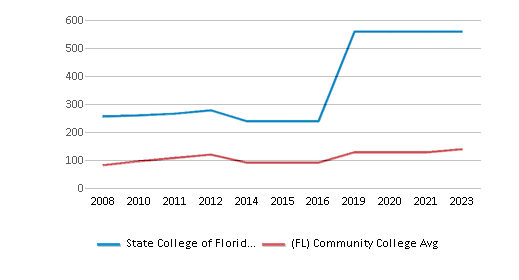
School Calendar
Student Body
The student population of State College of Florida-Manatee-Sarasota has grown by 11% over five years.
The student:teacher ratio of 20:1 has increased from 17:1 over five years.
The State College of Florida-Manatee-Sarasota diversity score of 0.63 is less than the state average of 0.76. The school's diversity has stayed relatively flat over five years.
Total Enrollment
11,280 students
646 students

Student : Teacher Ratio
20:1
20:1
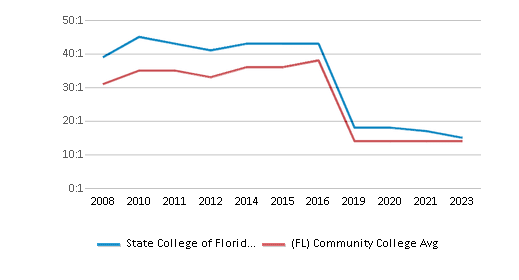
# Full-Time Students
5,016 students
587 students
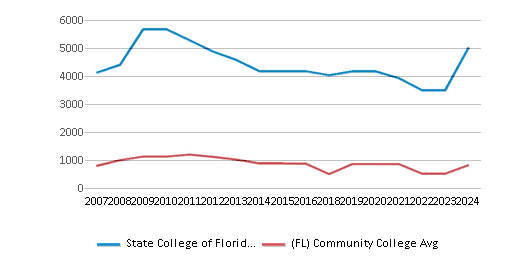
# Part-Time Students
6,264 students
557 students
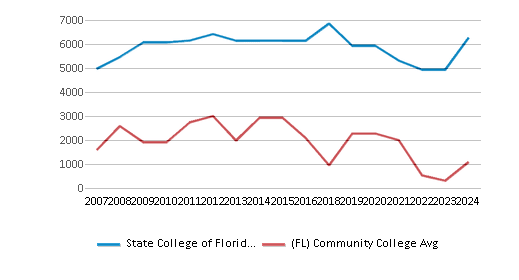
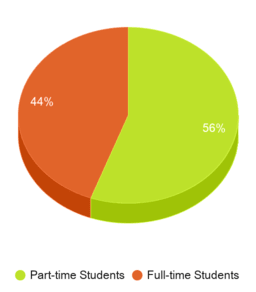
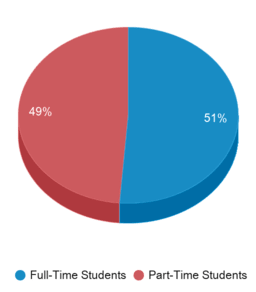
# Enrollment Undergraduate
112 students
261 students
# Full-Time Undergraduate Students
5,016 students
574 students
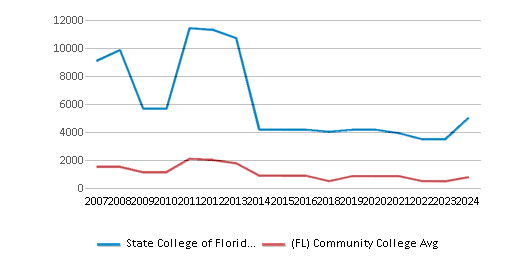
# Full-Time Graduate Students
n/a
85 students
# Part-Time Undergraduate Students
6,264 students
648 students
# Part-Time Graduate Students
n/a
36 students
Total Dormitory Capacity
n/a
174 students
% American Indian/Alaskan
1%
n/a
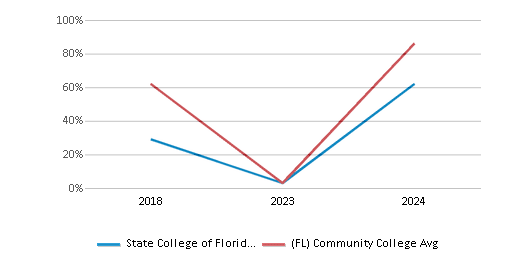
% Asian
4%
5%
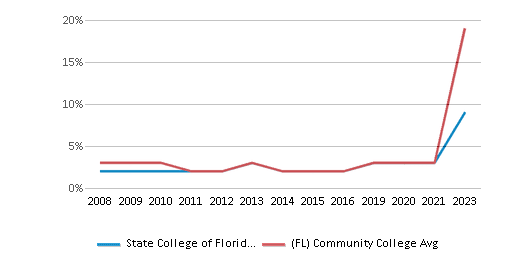
% Hispanic
23%
30%
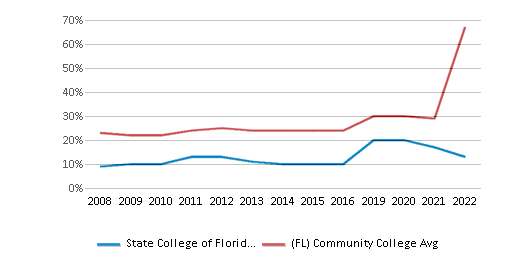
% Black
9%
19%
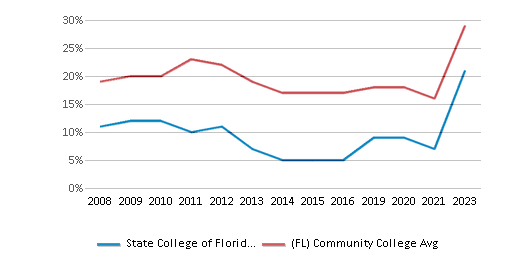
% White
55%
33%
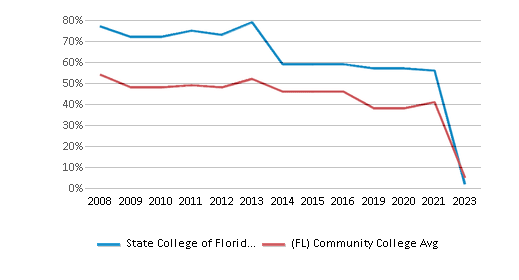
% Hawaiian
n/a
2%
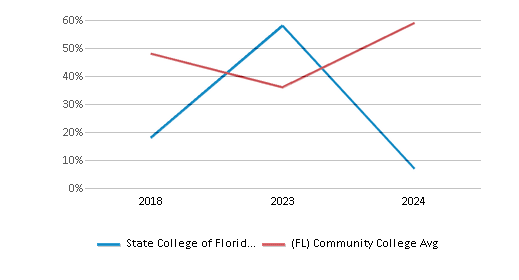
% Two or more races
1%
4%
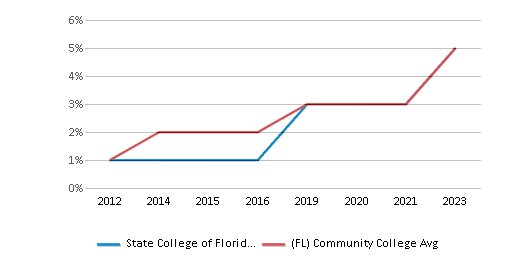
% Non Resident races
2%
2%
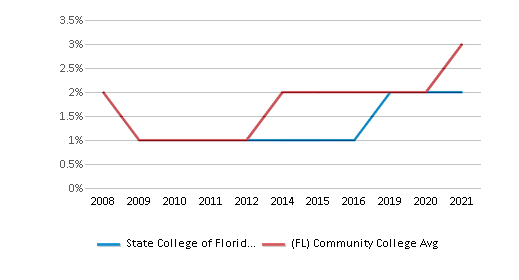
% Unknown races
6%
5%

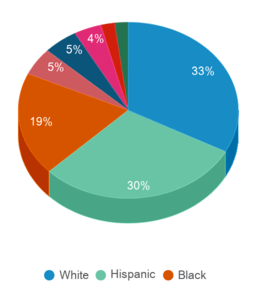
Diversity Score
0.63
0.76
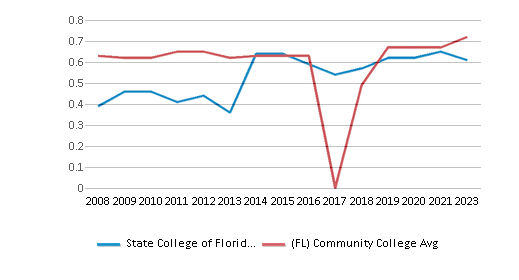
College Completion Rate (Students who graduate in less than 4 years)
31%
40%
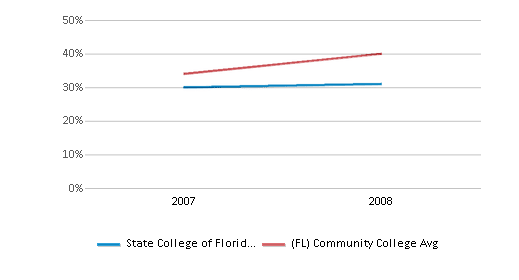
College Completion Rate (Students who graduate in 4 years or more than 4 years)
0.3718%
0.4334%
Average Graduate Earnings (10 Years)
$33,200
$31,500
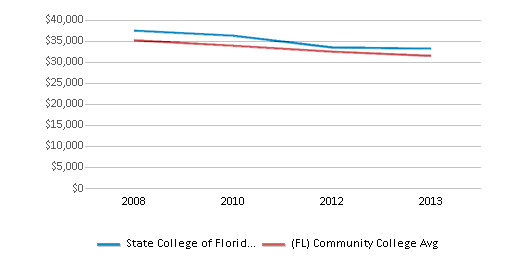
Tuition and Acceptance Rate
The public in-state tuition of $3,074 is less than the state average of $3,280. The in-state tuition has stayed relatively flat over four years.
The public out-state tuition of $11,606 is more than the state average of $10,578. The out-state tuition has stayed relatively flat over four years.
In-State Tuition Fees
$3,074
$3,280
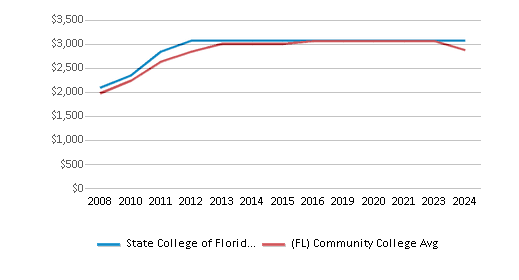
Out-State Tuition Fees
$11,606
$10,578
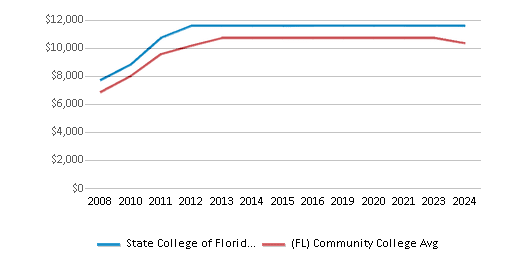
% Students Receiving Some Financial Aid
76%
88%
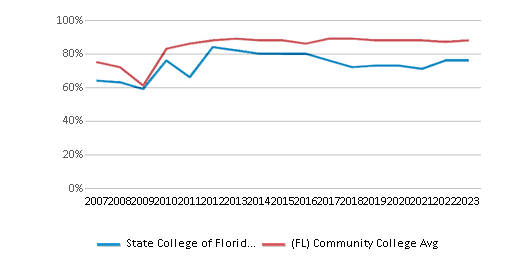
Median Debt for Graduates
$9,250
$9,750
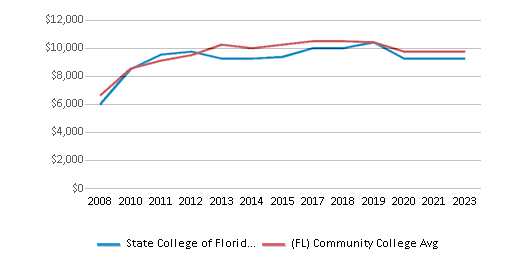
Median Debt for Dropouts
$5,500
$5,500
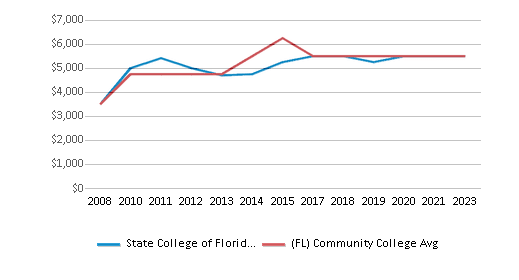
Acceptance Rate
n/a
94%
SAT Reading
n/a
442
SAT Math
n/a
429
ACT Composite
n/a
18
ACT English
n/a
18
ACT Math
n/a
18
Source: 2024 (or latest year available) Integrated Postsecondary Education Data System (IPEDS)
School Notes
- MCC offers credit and noncredit education including eLearning. Academic degrees include the Associate in Arts, the Associate in Applied Science and the Associate in Science. Noncredit education is offered under Corporate & Community Development. At Manatee Community College, every faculty and staff member has an impact on the quality of the College's educational experience. As such, the College offers its faculty and staff many resources in order to create a warm and supportive work environment. If you are a current MCC employee, you may find the links listed below helpful. More than 50 percent of the college bound high school students in Manatee and Sarasota counties attend MCC each year, with current enrollment nearly 11,000 students. MCC is among the top 100 producers of associate's degrees in the country. Students attend classes at two full-service campuses in Bradenton and Venice, the Center for Innovation and Technology at Lakewood Ranch, many business and public sector sites throughout the community, and from their homes via eLearning opportunities.
Frequently Asked Questions
How much does State College of Florida-Manatee-Sarasota cost?
State College of Florida-Manatee-Sarasota's tuition is approximately $3,074 for In-State students and $11,606 for Out-State students.
What is State College of Florida-Manatee-Sarasota's ranking?
State College of Florida-Manatee-Sarasota ranks among the top 20% of community college in Florida for: Largest student body.
Recent Articles

Obtaining Your Bachelor's Degree at a Community College
Explore the evolving landscape of community colleges offering bachelor's degrees, addressing affordability, accessibility, and workforce needs.

A to Z of Community College Certificates and Courses
From business and healthcare to technology and skilled trades, the article showcases the breadth of options available to students seeking to enhance their knowledge, develop new skills, or pursue career advancement.

What is a Community College?
This comprehensive guide explains what a community college is, its history, and its role in higher education. It covers the types of programs offered, differences from four-year colleges, benefits of attending, and important considerations for prospective students, providing valuable insights for those exploring educational options.






